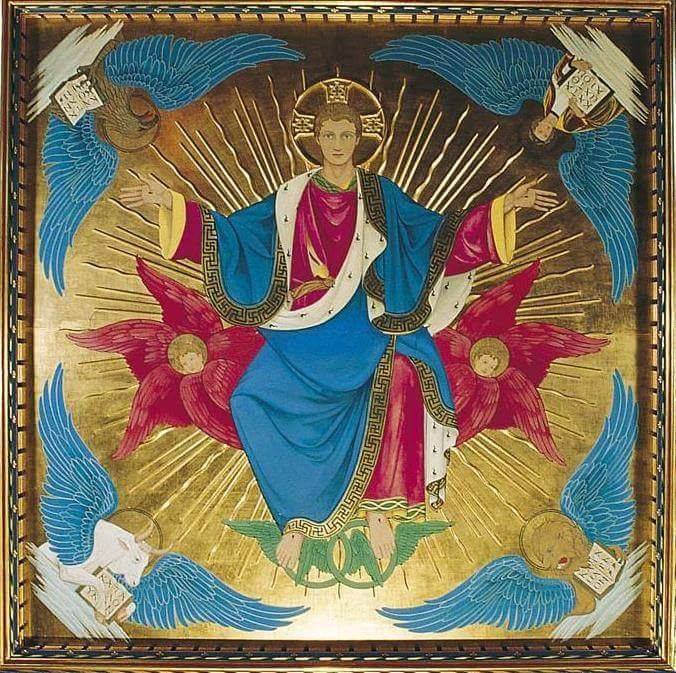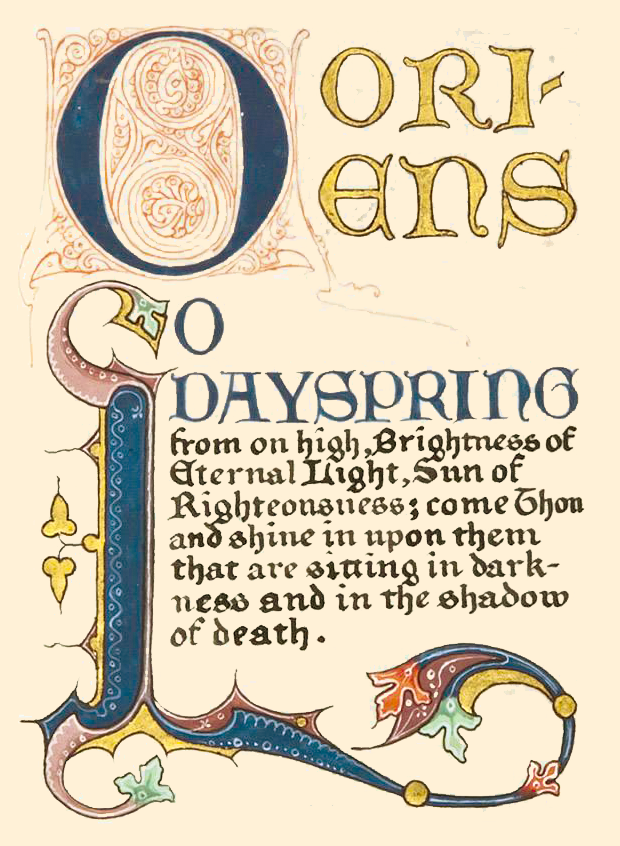21st December 2020
21st December - O Oriens
O come and enlighten those who sit in darkness and in the shadow of death.”
The fifth antiphon comes together out of a coincidence of literary necessity, the calendar and its relation to the previous antiphon.
Any literary-sensitive person will note the discomfort of “Oriens” following on from “O”. However, as with “Adonai”, “Oriens” in part serves to complete the acrostic that the antiphons form. Before despairing at such a utilitarian approach however, it has to be observed that the calendar comes to the rescue by providing an objective significance to this choice of words: 21st December is also the winter solstice. From now on, in the northern hemisphere, the Sun’s light indeed begins to increase and to rise earlier.
And this contrast between light and darkness, so aptly captured by St John in the prologue to His Gospel, also describes the relationship of this antiphon to its predecessor. The “Rising Sun” (or “Dayspring”, in some translations), follows immediately from the previous plea for freedom for “those who sit in darkness and the shadow of death.”
Before returning to the repetition of this last phrase, there are the three, distinct, light-themed invocations to consider, all of which are grounded in the Old Testament.
“Rising Sun” contains a duplicate reference. The Greek word, anatole, was used to signify not only “rising sun” but also “shoot” or “branch”. Anatole was used in the Greek translation of the Old Testament in Zechariah 3:8 and 6:12, both of which are Messianic prophecies referring to the Shoot or Branch. When St Jerome translated the Bible into Latin, he chose to translate these texts with the Latin for “rising sun” – “oriens”. This perhaps made all the more sense in view of the fact that St Luke used the same Greek word, anatole, in reporting Zechariah’s prophecy at the birth of his son, John the Baptist: “the loving-kindness of the heart of our God, who visits us like the rising sun from on high.” “Oriens” was the more fitting translation for St Luke’s text, and thereby the antiphon reflects its roots in the prophecies of both the Old Testament Zechariah and the New Testament Zechariah.
The phrase “Splendour of eternal light” points us back to the Book of Wisdom, and indeed to the first of the antiphons. This title is used to describe Wisdom herself, in 7:26. Whilst “eternal light” refers to the omnipotence of God (i.e. the Father), the emanating splendour of Wisdom has been understood as a reference to the Son since the earliest Christian times.
In keeping with the theme of significant days, “sun of justice” is found in Malachi’s prophecy of the Great Day of the Lord, in chapter 4. It will rise “with healing in its wings” for the righteous. Although the phrase is not found again in the Bible, a third century AD text, referring to Christ in relation to the “sun of justice”, helped to cement the tradition of the Lord’s Birth as being around the winter solstice.
The second half of this antiphon again draws in the theme of shadow and darkness, which awaits to be dispelled by the light. “Those who sit in darkness and the shadow of death” is also a phrase used by the New Testament Zechariah at the birth of John the Baptist (Luke 1:79). In his turn, Zechariah is undoubtedly borrowing from one of Isaiah’s great prophecies (Is 9:2), in which “the people who walked in darkness have seen a great light…”
The antiphon thus unites our prayers to those of our ancestors in asking the Lord to fulfil this prophecy and to save us from the shadow of darkness.
Stefan Kaminski
Director, The Christian Heritage Centre


